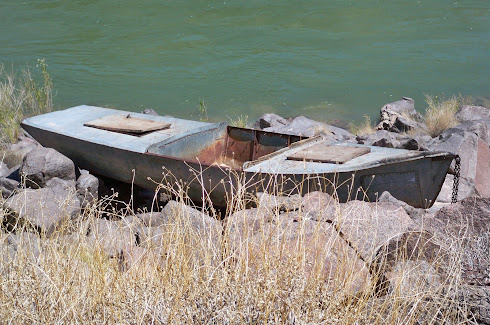So, what is all this WFR and WFA stuff, you ask, and does a volunteer have to be certified in one or the other to participate with search and rescue?
As for the second question, no. At least not here in Coconino County. SAR volunteers are not required to have medical training—though many do, including some EMTs, paramedics, and nurses on the team—and we're limited to Basic Life Support (BLS) as far as the medical care we can give in the backcountry, along with some splinting. But I'm sure this varies among SAR teams.
In my case, I haven't had the opportunity to use much of what I've learned in WFR courses "for real" in the field. Yet. But I feel better having the training in case I ever do need to make use of it, either in SAR or as a recreational hiker if I come across someone who's injured or ill in the backcountry. And, by "backcountry" I mean more than one hour from definitive medical care. That's the line used to differentiate between wilderness and urban medicine. With the number of SAR missions I go on and the amount of hiking I do on my own, chances are that, sooner or later, I'll have to put that WFR training to use.
Even if you're already an EMT, paramedic, nurse, or doctor, if all of your training is in urban medical care, I think some wilderness medical training would be great to have if you ever work or travel in the backcountry. This is because the backcountry environment means extended contact with a patient, whose condition and needs may change over time. It also means less-than-ideal conditions, like heat and cold, rain and wind, altitude and darkness, all of which can lead to increased stress on you, the rescuer. Improvisation is another thing that also goes hand-in-hand with wilderness medicine, when we often have only the gear on our backs and maybe a patient's gear to use to treat and splint.
A great book that really drives home the conditions faced by wilderness medical providers is Mountain Rescue Doctor: Wilderness Medicine in the Extremes of Nature
As far as wilderness medicine classes, here are general course descriptions:
Wilderness First Aid is a fast-paced, 16- to 24-hour class given over two or three days, covering a wide range of wilderness medicine topics for people who travel and work in the outdoors. Half the class time is spent completing practical skills, case studies, and scenarios, so students aren't just sitting and listening to an instructor the whole time but are instead putting their new skills to use constantly.
The next step up from WFA is the 40-hour Wilderness Advanced First Aid, a five-day class focusing on stabilization, treatment, and evacuation guidelines of patients in backcountry environments. There's more emphasis on long-term patient care and specific injury evaluation than in the WFA class.
The Wilderness First Responder course is an 80-hour curriculum designed to provide students with "the tools to make critical medical and evacuation decisions in remote locations"(NOLS). Like WFA, WFR students are constantly practicing their skills by participating in scenarios and case studies. Adult & Child CPR is also included in this course.
And then there's Wilderness EMT certification (W-EMT), the highest level of wilderness medicine training available. This is a 180-hour, month-long class that combines wilderness medicine with urban medical care practices, including time at a hospital and in an ambulance.
I took my first WFR class in 1996 with SOLO and my second 80-hour course as well as recert through the Wilderness Medicine Institute, a branch of the National Outdoor Leadership School.





















